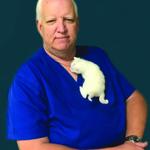LACONIA — For someone in the grips of active, chaotic substance misuse disorder — commonly understood as addiction — the road to stable recovery is long and intimidating, particularly for those who don’t have secure shelter. They have to develop a relationship with someone they can trust, arrange access to medical insurance, find a treatment facility that will accept them, and hope recovery is possible, that a better life awaits them.
All of those steps take time, and, with the myriad risks active substance users face, time is the one thing that might be in short supply. That’s the goal of harm reduction, to offer a range of supplies and services with the aim of buying people more time, so when they are ready to engage with the recovery process, they’ll still be around to do so.
In Laconia, a harm reduction clinic has been operating for about a year. It’s a project of several local community organizations operating on a shoestring budget, and the founding organizations — which collectively call themselves the Winnipesaukee Harm Reduction Advisory Council — say the return on investment is in lives saved, as well as a safer community in general.
A complex problem
“Treatment is an easy word to say, and it is at the same time an impossible word for people to complete,” said Lauren McGinley, executive director of the NH Harm Reduction Coalition, which both operates harm reduction clinics and helps facilitate others operated by partner organizations.
The Laconia clinic, known as the “LEX,” was created to fill a gaping hole in the availability of harm reduction services in the state. There are a few other such clinics in the state, but all exist in more southern communities. The next nearest is in Concord, which, for someone with limited means, is well out of reach.
It’s a pressing problem. Prior to 2020 overdose deaths commanded public attention and investments, and rates of death were falling. But once the coronavirus pandemic arrived, all that attention was redirected, and the despair and other disruptions associated with the pandemic undid all of that work.
According to the CDC, overdose deaths nationwide increased by 16% in the space of one year. In 2021, there were 106,699 drug overdose deaths, a rate of 32.4 deaths per 100,000 people. New Hampshire’s 441 overdose deaths in 2021 followed the same trend, measuring a per-100,000-person rate of 32.3. About two thirds of those deaths are attributed to the powerful synthetic opioid fentanyl, which is now commonly found in other illicit drugs, such as heroin.
McGinley said the reasons people begin using opioids or other illicit drugs are complex.
It might seem simple from a third-person perspective, McGinley said. If someone’s addicted to a substance, one might suggest they should seek treatment. People’s lives aren’t generally that simple, though, she said.
“Treatment might not be the most logical thing for them to do at that point,” McGinley said. She said taking someone from active substance use to recovery requires a “psychological marathon ... I think treatment is a lot more complicated than we give it credit for a lot of the time.”
The path to recovery can sometimes be seen as a chain of services, and for many, a harm reduction clinic is the first link in that chain.
Daisy Pierce is executive director of Navigating Recovery, one of the partners in the Winnipesaukee Harm Reduction Advisory Council, said the way the LEX works is by offering supplies needed by people in active substance misuse. As participants realize they can acquire necessities there, and they’ll be treated with dignity, they return week after week. In doing so, they will, over time, develop trust with the staff providing the supplies.
The LEX opened in April of last year, and has since seen 145 people sign up as participants to receive harm reduction supplies. The office, located in a nondescript space easily accessed from any point downtown, is open one day per week for five hours, and will generally see between 15 and 20 people each week, with the number slowly rising as word gets out.
Funding for the operation was solely in-kind donations from partner organizations for the first several months. More recently, the NH Harm Reduction Council has contributed about $700 per month, which is used to help purchase supplies. No tax dollars are used for the program.
Based on the numbers local recovery organizations see, Pierce suspects there are several hundred people locally who could benefit from the LEX. She said the hope — which is borne out by examples from harm reduction clinics which operate elsewhere — is that people will not only immediately reduce their risks while using, but will eventually choose to stop using altogether.
“Trust is built, relationships are established, every week we give people safer use tips,” Pierce said. “That includes withdrawal management, right there we can get them linked to treatment services. ... That is the goal, to have people come in and say, ‘I’m ready.’”
Participants who come to the LEX are handed a clipboard with a form. That form includes some basic questions, as well as a menu of all items available. Participants can get basic necessities such as bottled water, snacks and clothing. They can get naloxone, which can reverse the effect of an opioid overdose. They can get test strips to tell if their substance is contaminated with fentanyl or with xylazine, a horse tranquilizer that can result in large skin lesions in humans. They can get contraceptives and wound care kits, and, because smoking drugs is considered safer than injecting, they can get pipes. LEX will also supply clean needles for intravenous uses, but only on a one-for-one basis — participants can get a few clean needles when they first visit, thereafter they must bring in used needles to exchange for clean syringes.
Pierce reported the LEX has so far distributed 21,115 syringes and have collected 20,556 used needles for safe disposal. Providing clean syringes helps avoid the risk of blood-borne diseases, such as hepatitis or HIV, which can occur when people share needles, as well as localized infections when people reuse a dirty needle. And because participants are incentivized to store and return their used needles, they aren’t dropping them in public spaces or disposing of them improperly.
“You can’t get people into recovery if they’re dead,” Pierce said. “We’re trying to keep them alive long enough to come in for recovery.”
‘Pre-contemplative’
Freeman Toth, the homeless outreach and housing stability coordinator for Belknap-Merrimack Community Action Program, uses the term “pre-contemplative” to refer to people who are active substance users who aren’t yet considering how they might enter recovery.
Toth, who experienced unsheltered living as a teenager, said harm reduction works when it meets people where they are, and addresses the needs they have at that moment.
“Our help is unconditional. I’m not here to tell someone to stop using, I’m here to keep them safe until things get better,” Toth said.
CAP is part of the Winnipesaukee Harm Reducation Advisory Council – other organizations include Navigating Recovery, Concord Hospital, Laconia Police Department, the Partnership for Public Health, Lakes Region Mental Health Center and HealthFirst.
Toth said by reducing the risks of the participants who walk through the doors, LEX is also reducing risks, and costs, for everyone in the community.
“Everything we’ve seen in the last year in the one-for-one [needle exchange] cleans up the streets,” Toth said. It used to be that he would regularly get calls about needles in parking lots or parks, but that has largely stopped since the LEX opened. “It’s not street outreach doing it, it’s our unhoused neighbors cleaning up, because they care.”
Without a needle exchange, there’s no good option for someone, particularly if they’re unsheltered, if they need to dispose of a used syringe. Now they can safely drop that off, and get a clean one if needed.
“Every time we give a person a clean needle and take a dirty one, we’re preventing a case of endocarditis,” Toth said. “If people want to get upset about handing out Narcan, that prevents an ambulance ride,” and those emergency medical services, if they can’t be paid by the patient, would typically be funded by higher costs to other medical system users.
Toth said it’s apparent that drug use is a part of society, and has been for a long time. The question should be, he said, how does society engage with that behavior?
“The reality is, if we handle it in a way that stigmatizes, we will continue to lose our friends and loved ones,” Toth said. A better approach, in his view, is to reach a hand out to people who are in crisis and, without condoning their risky behavior, offer ways to reduce their risk. “When you don’t attach strings, that’s when the magic starts to happen. Most people know what they need to do, they just need some time to get there.”
“No shame, only safety. That’s kind of our motto,” Toth said.
One participant, who gave the name Forrest, represents the kind of success Toth said is possible. Forrest visited the LEX in March, brought in a container full of used syringes and asked for a lesser amount in return. He said he has been in and out of active opioid use for many years, and was experiencing homelessness before he started engaging in harm reduction services. He’s been able to find stable housing, thanks to CAP, and said the LEX helps him to “get through addiction” without suffering from some of its worst acute effects.
“I’m still using. If I didn’t have this place, I’d be reusing needles, that’s dangerous and kind of gross.”
Forrest said he’s lost friends to substance misuse, and said services such as the LEX are a “life-saver.”
Referring to drug misuse, Forrest said, “This shit’s for the birds, I don’t want to do this my whole life.” He wasn’t ready on that day to talk about recovery, but, “I know when that day comes, I’ll be supported. I’ll have people who have my back and will help me through it.”


















(2) comments
Enabling them to use is not helping them. This is obviously just a vehicle to keep a steady flow of addicts into rehab facilities in order to receive government funding. This worked out well in San Francisco and Seattle didn't it? They're the most homeless infested in the world.
well anything we can do to make their using drugs in public much more comfortable for them.
Welcome to the discussion.
Log In
Keep it Clean. Please avoid obscene, vulgar, lewd, racist or sexually-oriented language.
PLEASE TURN OFF YOUR CAPS LOCK.
Don't Threaten. Threats of harming another person will not be tolerated.
Be Truthful. Don't knowingly lie about anyone or anything.
Be Nice. No racism, sexism or any sort of -ism that is degrading to another person.
Be Proactive. Use the 'Report' link on each comment to let us know of abusive posts.
Share with Us. We'd love to hear eyewitness accounts, the history behind an article.